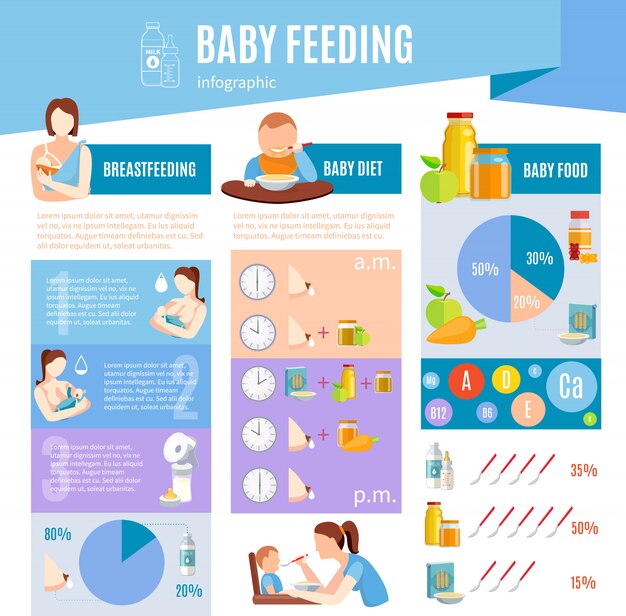
Breast milk is the top choice for baby nutrition, as it’s packed with nutrients that boost the baby’s immune system. That’s why doctors specializing in children’s health, known as pediatricians and neonatologists, recommend breastfeeding for at least the first six months. It’s not just about nutrition, though. Breastfeeding also strengthens the emotional bond between mother and baby. But sometimes, breastfeeding isn’t an option.
There are various reasons why some moms might need to use baby formula instead, or switch to it entirely. This change can be stressful for your baby, as each baby is unique and may react differently to formula, even though it’s safe and reliable. That’s why it’s important to know how to introduce formula in a way that’s as gentle as possible for your baby.
Parents often wonder how to switch to formula feeding correctly and whether the formula will meet all their child’s nutritional needs. It’s important to remember that only a pediatrician should recommend a suitable baby formula. However, understanding the basic rules and the composition of baby formula can be very helpful.
There are several common reasons for switching to formula feeding. These include a mother taking a long time to recover from a difficult labor, treatment with medications that are not safe for the baby, hormonal disorders that prevent lactation, long-term separation of mother and child, or simply a personal choice to use formula.
When transitioning to formula feeding, there are some important rules to follow. First, consult with your doctor. If you’re struggling with breastfeeding due to low milk supply, a specialist can provide recommendations to increase and restore lactation. If breastfeeding doesn’t improve, your pediatrician can advise you on introducing a milk formula and help you choose the best one for your baby. Babies have different nutritional needs depending on their age, health issues, and weight, so it’s important to choose a formula that suits your baby’s needs and to follow all instructions for preparing it.
Keep an eye on your baby’s reaction to the formula. The introduction of formula should be gradual, and your pediatrician can advise you on the recommended proportions. It’s also important to monitor your baby’s body’s reaction after feeding. If your baby shows signs of digestive disorders or other unpleasant symptoms, you should visit your doctor. In some cases, you may need to switch to a different formula. If your baby is gaining weight well and is in good health with no adverse reactions, it means that the formula is a good fit.
If you decide to change the formula, do it gradually to give your baby a chance to get used to the new formula. Some babies accept the new formula right away, but for others, it can take a week to a month. Don’t rush to change the formula if you think your baby isn’t eating very well.
There are specific issues that might require a change of formula, such as allergy symptoms to the first formula, the need to give the baby a therapeutic formula due to a disease, milk protein intolerance or lactase deficiency, insufficient weight gain, or the need to switch to a new stage of nutrition due to reaching a certain age.
The reasons for switching from one formula to another should be clearly defined. Usually, a pediatrician recommends a change of formula if the child’s health requires it. Frequent and unreasonable switching to a new formula can stress the child’s body and cause digestive problems. If your baby’s behavior is not a cause for concern, there’s no need to change the formula.
When choosing a formula, pick one that’s appropriate for your baby’s age. Newborns and babies under six months should use formula marked “1”, formula labeled “2” is for babies aged 6-12 months, and formula marked “3” is for babies from 12 months. Premature infants, weak infants, and low-birth-weight babies should use formula marked “0” or “Pre”. Healthy infants under six months of age should receive regular milk formulas, which are optimized to be as close as possible to the composition of breast milk. After six months, you can switch to casein formulas, which contain cow protein and can cause allergies.
There are also therapeutic formulas, which should only be prescribed by a doctor. For example, the hypoallergenic formula for allergy-prone babies is marked “HA”. If digestion is impaired, constipation or colic, or if there is frequent and abundant regurgitation, antireflux can also be prescribed.
Before buying baby food, check the composition, expiration date, and completeness of the package carefully. The formula should not contain preservatives or chemical compounds, soy, or lecithin and should be marked as organic baby formula. For children under one year of age, buy food without gluten, sugar, or fructose. It’s good if the formula contains vitamins and minerals, pro-and prebiotics, and fatty acids.
You can find organic baby formula from a variety of manufacturers. Check out babymilkbar.com to find the best organic baby formula for your little one.






